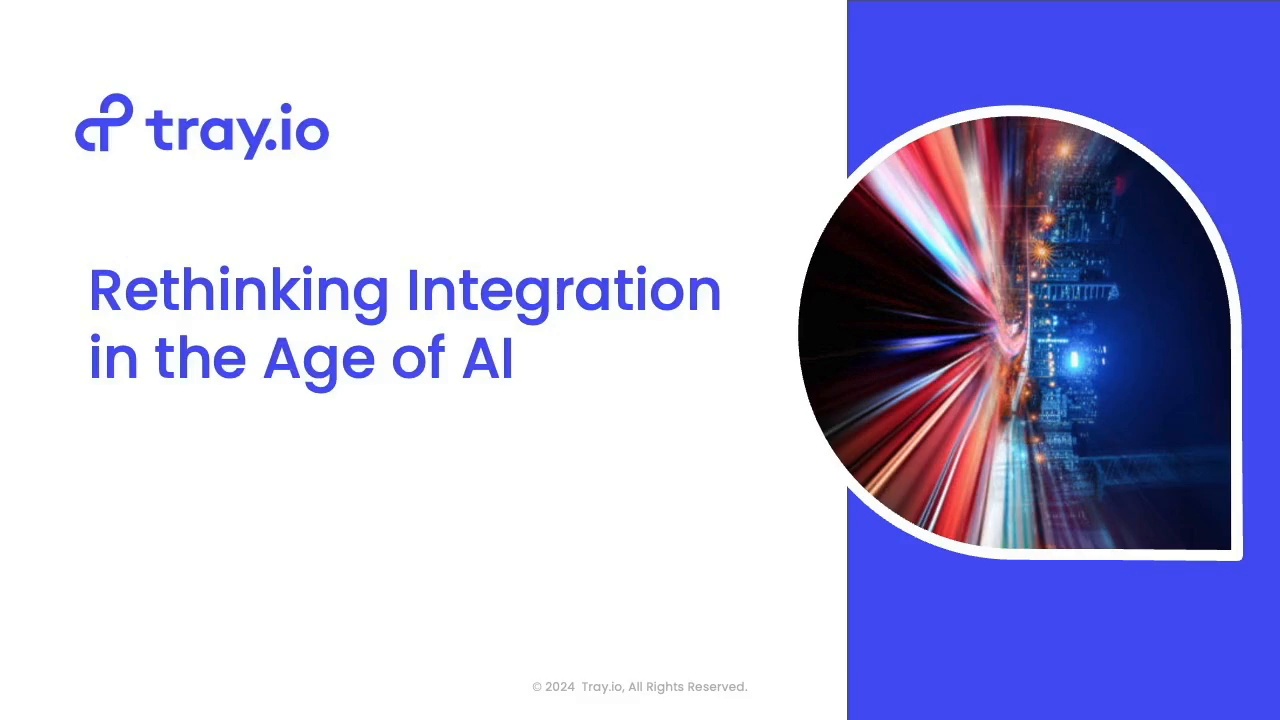Webinar
How AI is reshaping integration development
Overview
AI is changing the way enterprises build and run integrations. In this session, see how AI can accelerate development, improve existing processes, and open new opportunities for automation.
What you’ll learn
- How AI is reshaping integration development practices
- Real-world examples of AI-augmented workflows
- New ways to infuse AI into business processes
- Why building flexible, future-proof architectures is critical
Session chapters
- Why AI is reshaping enterprise integration
- How to infuse AI into business processes
- Live demo: building AI-augmented workflows
- Summary and Q&A
Featuring

speaker
Paul TurnerProduct Strategy
speaker
Luke SmithPrincipal Sales EngineerMore like this

30 minutes
Tray First Look: Agent Hub
The first catalog of reusable building blocks that turn pilots into production agents
Product release
2 Presenters

30 minutes
What to do with your second agent
Learn from Tray.ai CEO Rich Waldron and Amalgam Insights CEO Hyoun Park on how to master scaling AI agents, from orchestration and ROI to scalable deployment.
LinkedIn Live•Expert conversation
2 Presenters

1 hour
How Yext cut integration costs by 60% in 90 days
Yext delivered 100+ integrations in 3 months. See how they did it—and why their old platform was slowing everything down.
Customer story
2 Presenters
